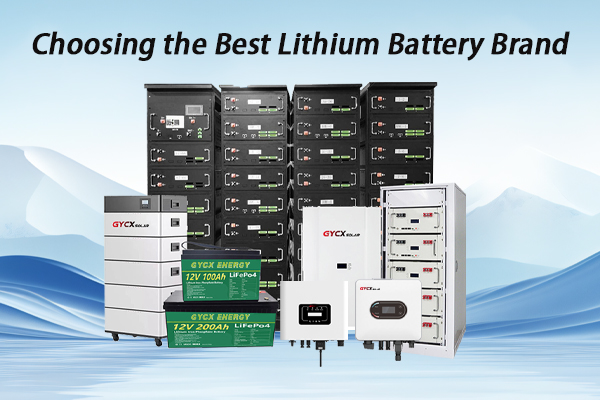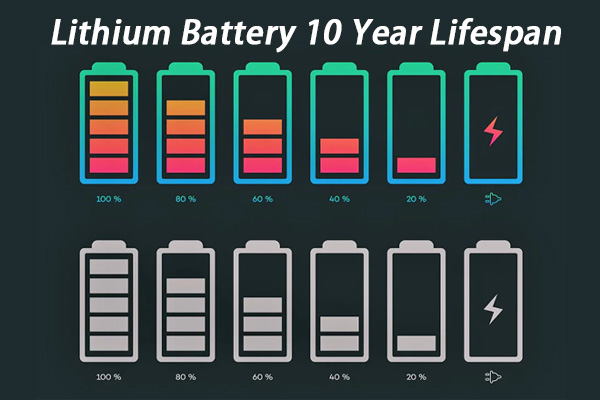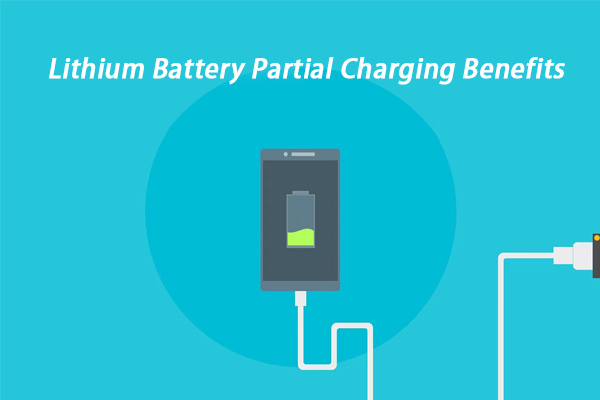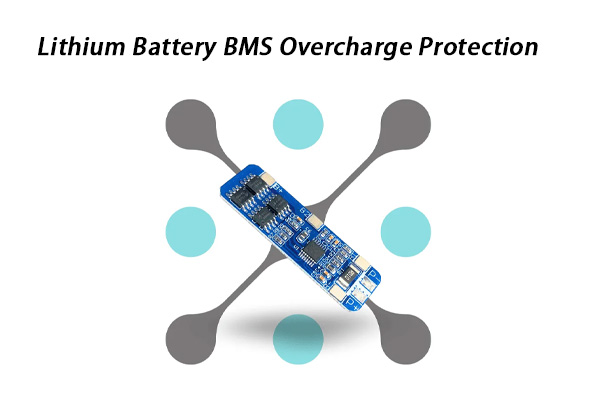어떤 브랜드의 리튬 배터리가 가장 좋습니다?
끝없는 배터리 브랜드 옵션에 좌절합니다? 태양열 또는 에너지 저장 프로젝트에 대한 진정한 가치와 수명을 제공하는 것에 대해 혼란스러워? 우리는 당신의 선택을 단순화합니다, 가장 잘 맞는 최고의 리튬 배터리 솔루션으로 안내합니다. 당신의 특정 에너지 요구.
"최고" 리튬 배터리 브랜드는 한 가지 크기의 답변이 아닙니다; 그것은 실제로 당신의 응용 프로그램에 따라 다릅니다 (태양 에너지 저장, 전기 자동차, 휴대용 전력, 등.). 고려해야 할 주요 요인은 배터리 화학입니다 (태양열의 경우 리튬 철 포스페이트 - LFP와 마찬가지로), 예상주기 수명, 보증 약관, 안전 인증, 그리고 중요하게, 인버터 시스템과의 호환성, Growatt 또는 Huawei의 것과 같은 것. Gycx Solar에서, 투자에 최적의 선택을하기 위해 이러한 요소를 평가하는 데 도움이됩니다..

올바른 리튬 배터리를 찾는 것은 복잡한 미로를 탐색하는 것처럼 느낄 수 있습니다.. 그러나 걱정하지 마십시오! GYCX Solar에서 우리가 듣는 가장 일반적인 질문 중 일부를 분해하기 위해 여기에 있습니다.. 저의 목표는 명확하게 제공하는 것입니다, 리튬 배터리 기술을 더 잘 이해하고 결정을 내릴 준비가되었을 때 자신감을 느끼는 데 도움이되는 간단한 답변. 다이빙합시다.
리튬 배터리가 수명이 가장 길다?
배터리 투자가 필요한만큼 오래 지속되지 않을까 걱정했습니다.? 시간의 시험을 견디는 강력한 솔루션을 찾고, 특히 귀중한 태양 에너지 시스템에? 수명에 관해서는, 하나의 화학은 일반적으로 팩을 이끌고 있습니다.
리튬 철 포스페이트 (LFP 또는 LIFEPO4) 배터리1 일반적으로 가장 긴 수명을 제공합니다. 품질 LFP 배터리가 초과하는 것이 일반적입니다 3,000 에게 6,000 깊은 전하 차지 사이클, 그리고 많은 사람들이 더 많은 평가를 받았습니다, 잠재적으로 지속됩니다 10 에게 15 일반적인 태양 광 응용 분야에서 몇 년 이상. 이 내재적 내구성은 태양 에너지 저장에 탁월하고 인기있는 선택입니다., 긴 서비스 수명이 중요한 투자 수익에 중요한 곳.

배터리 수명에 대해 이야기 할 때, 우리는 두 가지 주요 사항을 고려합니다: 순환 수명과 달력 수명. 사이클 수명 용량이 크게 저하되기 전에 배터리가 견딜 수있는 전체 충전 및 배출 순환 수입니다. (보통 70-80% 원래 용량의). 달력 수명 배터리가 몇 년 동안 얼마나 오래 지속되는지, 사이클 수에 관계없이, 내부 화학으로 인해 배터리도 시간이 지남에 따라 천천히 저하됨에 따라.
태양 에너지 시스템의 경우, LFP 배터리가 빛납니다. 그들의 화학 구조는 NMC와 같은 다른 리튬 이온 유형보다 더 안정적입니다. (니켈 망간 코발트), 에너지 밀도가있는 EVS 또는 휴대용 전자 장치에서 자주 사용됩니다. (적은 공간에서 더 많은 힘) 궁극적 인 사이클 수명보다 우선 순위가 높습니다. NMC 배터리는 이러한 용도에 적합합니다, 아마도 제공 1,000-2,000 사이클, 가정 또는 상업적 태양 저장에 사용되는 LFP 배터리는 제공 할 수 있습니다. 3,000, 5,000, 또는 검색 결과가 보여 주듯이, 심지어 6,000+ 사이클. 배출 깊이와 같은 요인 (각 사이클마다 배터리를 얼마나 많이 사용하는지), 작동 온도, 그리고 배터리 관리 시스템의 품질 (비엠에스) 또한 수명을 극대화하는 데 중요한 역할을합니다. 우리는 항상 이러한 요소가 최적화되도록하는 시스템에 대해 조언합니다..
| 특징 | 리튬 철 포스페이트 (LFP) | 니켈 망간 코발트 (NMC) | 태양의 주요 이점 |
|---|---|---|---|
| 사이클 수명 | 3,000 - 6,000+ 사이클 | 1,000 - 2,000 사이클 | 장수를위한 LFP |
| 안전 | 더 높은 열 안정성 | 좋은, 그러나 LFP보다 낮습니다 | 안전을위한 LFP |
| 에너지 밀도 | 좋은 | 더 높은 | NMC 공간이 극단적 인 제약 인 경우 |
| 전형적인 사용 | 태양 저장, 산업용 | EV, 휴대용 전자 장치 | 태양 저장 용 LFP |
리튬 배터리는 실제로 지속됩니다 10 연령?
10 년 동안의 배터리 성능의 주장에 대해 회의적입니다? 공정한 질문입니다, 특히 태양열 배터리 시스템과 같은 상당한 투자를 할 때. 배터리가 진정으로 멀리 갈 것인지 궁금합니다? 많은 고품질 리튬 옵션의 경우, 대답은 안심입니다.
예, 많은 고품질 리튬 배터리, 특히 리튬 철 포스페이트 (LFP) 태양 에너지 저장 시스템에 일반적으로 지정된 유형, 확실하게 지속될 수 있습니다 10 몇 년 또는 상당히 더. 평판이 좋은 제조업체는 종종 10 년 이상에 걸친 보증 으로이 성과를 뒷받침합니다., 장기 에너지 투자에 대한 마음의 평화를 제공합니다..

달성 a 10+ 태양계의 리튬 배터리의 연간 수명은 올바른 기술과 관리에서 매우 현실적입니다.. 우리가 검색 결과에서 보았던 것처럼, LFP 배터리는 이러한 종류의 수명을 위해 설계되었습니다, 종종 등급 10-15 수년간의 서비스. 제조업체가 10 년 보증을 제공하는 경우, 일반적으로 배터리가 원래 용량의 특정 비율을 유지할 것을 보장합니다. (예를 들어, 70% 또는 80%) 그 기간이 끝날 무렵. 이것은 단순한 마케팅 주장이 아닙니다; 화학의 내구성과 배터리 구조의 품질 및 배터리 관리 시스템의 품질에 대한 증거입니다. (비엠에스).
이 인상적인 수명에 몇 가지 요인이 기여합니다:
- 화학: LFP.
- 방전 깊이 (국방부): 배터리를 정기적으로 배수하지 않습니다 0% 도움이됩니다. 대부분의 태양계는 최적의 DoD 범위 내에서 작동하도록 설계되었습니다. (예를 들어, 사용 80-90% 용량의) 삶을 연장하기 위해.
- 작동 온도: 배터리는 온도에서 가장 행복합니다. 적절한 열 관리가없는 매우 뜨겁거나 매우 차가운 환경에 설치된 시스템은 수명이 짧을 수 있습니다..
- 품질 BMS: 정교한 BMS가 중요합니다. 배터리가 과충전되지 않도록 보호합니다, 과방전, 극한 온도, 세포의 균형을 유지합니다, 길고 건강한 삶에 필수적입니다..
그래서, 약 10 년의 수명을들을 때, 특히 좋은 브랜드의 태양 광 응용 분야의 LFP 배터리의 경우, 설립 된 기대입니다.
사용 후 리튬 배터리를 충전해야합니다?
충돌하는 충전 조언으로 혼란스러워 수년 동안 들었을 수도 있습니다.? "훈련에 대해 걱정" 배터리 또는 부적절한 충전 습관으로 손상? 좋은 소식은 현대 리튬 배터리입니다, 특히 태양 에너지 시스템 내에서 관리되는 것들, 이전 배터리 기술보다 훨씬 유연하고 지능적입니다..
반드시 그런 것은 아닙니다, 특히 태양 에너지 시스템에 사용되는 리튬 이온 배터리의 경우. 이 배터리는 "메모리 효과로 어려움을 겪지 않습니다" 이전 배터리 유형에서 볼 수 있습니다. 부분 충전은 완벽하게 괜찮습니다. 태양 저장 시스템에서, 통합 배터리 관리 시스템 (비엠에스) 그리고 태양 전하 컨트롤러 (종종 Growatt 또는 Huawei의 인버터와 같은 인버터의 일부) 배터리 수명을 보호하고 확장하는 가장 최적의 방법으로 충전 프로세스를 자동으로 처리합니다..

리튬 이온 화학의 가장 큰 장점 중 하나는 "메모리 효과가 없다는 것입니다." 오래된 니켈-카드미듐 배터리, 예를 들어, "기억하십시오" 그들이 재충전하기 전에 반복적으로 부분적으로 배출 된 경우, 용량의 상실을 인식합니다. 리튬 배터리에는이 문제가 없습니다. 짧은 기간 또는 장기 동안 청구 할 수 있습니다., 다양한 퇴원 상태에서, 이 우려없이.
태양 에너지 시스템의 경우, 일반적으로 생각할 필요가 없습니다 언제 그것을 충전하려면. 이 시스템은 사용 가능한 태양 에너지를 캡처하고 즉시 사용되지 않는 것을 저장하도록 설계되었습니다.. BMS와 인버터는 끊임없이 노력하고 있습니다:
- 잉여 태양열이있을 때 배터리를 충전하십시오.
- 배터리가 적절하게 가득 차면 충전을 중지하십시오, 최적의 충전 매개 변수로 정의됩니다 (약간 낮을 수 있습니다 100% 수명을 연장 할 수있는 절대 최대 용량).
- 배터리가 너무 깊게 방전되는 것을 방지하십시오.
리튬 배터리가 장착 된 소규모 소비자 전자 장치, 사용자는 청구를 유지하려고 시도 할 수 있습니다 20% 그리고 80% 사이클 카운트를 최대화합니다, 이것은 대규모에 대한 수동 관심사가 아닙니다, 전문적으로 설치된 태양열 배터리 시스템. 시스템의 정교한 전자 제품은 가장 건강한 작동 범위 내에서 배터리를 유지하도록 프로그래밍됩니다.. 그래서, 휴식을 취하고 스마트 태양계가 작동하도록하십시오.!
충전기에 리튬 이온 배터리를 하룻밤 사이에 두는 것은 괜찮습니까??
우리 중 많은 사람들이 충전기에 장치를 남겨 두는 것에 대한 경고를 너무 오랫동안 들었습니다., 과충전에 대한 우려로 이어집니다, 특히 밤새. 그래서, 당신의 상당한 투자 (당신의 리튬 이온 배터리 에너지 저장 시스템)를 남겨두고 충전하는 것은 괜찮습니까??
예, 품질 배터리 관리 시스템이 장착 된 최신 리튬 이온 배터리 시스템 용 (비엠에스), 태양 에너지 저장에 사용되는 것과 같은 것, 괜찮을뿐만 아니라 표준 연습입니다. 이 시스템은 영구적으로 연결되도록 설계되었습니다. BMS는 배터리의 뇌입니다, 주요 작업 중 하나는 태양 전지판이나 그리드와 같은 충전 소스에 연결되는 동안 배터리의 건강을 과충전 및 관리하는 것입니다..

리튬 이온 배터리 과충전에 대한 우려는 주로 오래된 것입니다., 더 간단한 충전 시스템 또는 매우 저렴합니다, 보호 회로가 부적절하거나 결석 할 수있는 위대한 소비자 전자 장치. 하지만, 태양 에너지 저장과 같은 응용 프로그램을 위해 설계된 평판이 좋은 리튬 배터리의 경우, 정교한 BMS는 필수적인 부분입니다.
충전기에 남아있을 때 BMS가 배터리를 안전하게 유지하는 방법은 다음과 같습니다. (어느, 태양계의 경우, 정상적인 상태입니다):
- 과충전 보호: BMS는 배터리 팩에서 각 셀의 전압을 지속적으로 모니터링합니다.. 셀이 지정된 최대 충전 전압에 도달하면, BMS는 충전 전류를 중지합니다, 태양 전지판이 여전히 전력을 생산하거나 그리드 충전기가 활성화되어 있어도.
- 셀 밸런싱: 배터리 팩 내의 모든 셀이 충전되고 균등하게 배출되도록합니다., 장수와 안전에 중요한 것입니다.
- 온도 모니터링: 배터리가 너무 뜨거워 지거나 너무 차가워지면 온도를 모니터링하고 충전/방전을 줄이거 나 멈출 수 있습니다..
- 플로트 충전/유지 보수 모드: 일단 완전히 충전되면, 시스템이 "플로트로 들어갈 수 있습니다" 또는 유지 보수 모드, 배터리를 강조하지 않고 탑승하기 위해 소량의 전력을 끌어 올리는 곳.
그래서, 의식적으로 플러그를 뽑을 수있는 휴대 전화와 달리, 태양열 배터리 시스템은 BMS와 연결된 인버터/충전기에 의해 항상 연결되고 지능적으로 관리됩니다.. 이렇게하면 필요할 때 준비가되어 있고 최적의 상태로 유지됩니다..
결론
"최고" 리튬 배터리는 단일 매직 브랜드를 찾는 것이 아닙니다, 오히려 특정 에너지 저장 요구를 이해하고 올바른 기능과 일치시킵니다.. 리튬 철 포스페이트 우선 순위 (LFP) 뛰어난 수명과 안전을위한 화학, 강력한 보증을 찾고 있습니다, 고품질 배터리 관리 시스템이 핵심 단계임을 확인하는 것이. 쉽게 초과 할 수있는 수명이 있습니다 10 연도와 지능적인 충전 관리, 최신 리튬 배터리는 신뢰할 수 있고 내구성있는 솔루션을 제공합니다.
지금 리튬 배터리에 대해 더 자신감을 갖고 있습니다? 집에 이상적인 배터리 솔루션을 탐색 할 준비가 되었으면, 사업, 또는 유틸리티 규모 프로젝트, 우리는 Gycx 솔라2 전문가지도와 다양한 품질 옵션을 제공하기 위해 여기에 있습니다.. 문의를 시작하고 미래를 강화하기 위해 우리에게 연락하십시오., 함께!
